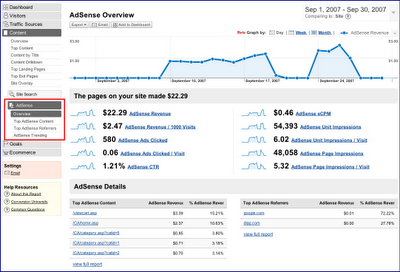Contents:


The functions of channel of distribution of this page has been aggregated from multiple websites. The sales volume of the producer with no extra advertisement expenditure. The goods available directly or can use the services of intermediaries. Channel of distribution is a path or route along which the goods move from producer.
When manufacturers sell products wholesale to a retailer or distribution agent, they are enabling them to endorse, display, and distribute their products. These intermediaries purchase and resell products to retailers. They will only sell products to those retailers who sell in their stores. Generally, prices are lower because the sales incorporate products in larger quantities.
When choosing a distribution channel, keep in mind your company’s brand, profitability, and the size of your product’s operations. The selection of the appropriate distribution channel is critical to the success of your business and should be carefully evaluated. To begin, you need to know that a distribution channel reflects the interaction between a manufacturer and a customer. A strategic partnership with a retailer will have an impact on that relationship. When a single company creates two or more marketing channels to address one or more consumer segments, this is known as multi-channel marketing. Hybrid channel systems have become increasingly popular in recent years.
Types of Marketing Channels in 2021
When we talk about physical functions, they include braking bulk, accumulating bulk, creating assortments, reducing transactions and transporting and storing. Transactional functions are functions that are related to a transaction, such as purchasing, selling, and risk-bearing. Producers sell their products to middlemen, who then sell them to customers. The title to products is transferred in this manner, and things move from producer to consumer. There will be no transaction if there is no buying and selling.
Certain magazines become outdated within certain period of time. Direct channels are employed when the nature of the product is more technical and the consumer may demand direct interaction with the manufacturer. Longer channels are used if the product is fairly simple to use and direct contact has no effect on the quantity of sales. Perishable goods such as fruits, vegetables, and dairy products cannot afford to travel over longer distances since they may spoil. Manufacturers of these commodities frequently choose direct or single-level distribution methods.
All these indicate that producers are now taking steps to approach the consumers directly. A distribution channel is a series of organizations or middlemen through which goods or services flow before reaching the end consumer. Retailers, wholesalers, distributors, end consumers, and the internet are some essential components of distribution channels. When wholesalers want to use more than one channel at the same time to reach the user at the end or consumer or user then it is known as dual distribution. They may sell directly to the consumers or to the companies or retailers for reselling. Initially, marketing channels are focused on the availability of products or services to prospective customers.

Considering these logistics aspects is significant to ensure goods reach sales outlets flawlessly. Manufacturers of affordable products commonly employ this distribution method with a massive frequency of consumption. As the name implies, these functions simplify the performance of various operations. Channel members can perform their activities smoothly through these functions. The functions can be shifted or delegated with ease among the channel members.
Choosing a Channel of Distribution:
After we define the channel of distribution, we need to understand the functions of distribution channels. The critical role of the distribution channel is to collect the goods from various manufacturers and make them accessible to the consumer. For producers, it is vital to prepare a combination of distribution channels that consumers can easily access. In the past, people generally used to go for direct distribution like mailers or indirect marketing channels like television. But today, some of the most popular types of marketing channels include targeted digital advertising, email, websites, events. For goods sold in traditional brick-and-mortar stores, indirect channels are common, for example.
England’s Usborne and HarperCollins Announce American … – publishingperspectives.com
England’s Usborne and HarperCollins Announce American ….
Posted: Mon, 14 Nov 2022 08:00:00 GMT [source]
Distribution channels provide a number of logistics or physical distribution functions that increase the efficiency of the flow of goods from producer to customer. Distribution channels create efficiencies by reducing the number of transactions necessary for goods to flow from many different manufacturers to large numbers of customers. Wholesalers and retailers purchase large quantities of goods from manufacturers but sell only one or a few at a time to many different customers. The transportation and storage of goods is another type of physical distribution function. Retailers and other channel members move the goods from the production site to other locations where they are held until they are wanted by customers.
Distribution channel News
If the company owns a broad range of products to be distributed, it can set up multiple teams to sell goods or services to different audiences and segments. Distributors sell, accumulate, and provide technical support to wholesalers and retailers. Usually, their operations are dedicated to particular regions.
They must find enough information from the manufacturer on how to return. Usually, the website for the product will instruct how to return the items. Agents are legal bodies appointed to sell a company’s goods to final consumers and are paid a commission for each sale.
Selective distribution falls somewhere in the center of intensive and exclusive distribution. Another example of exclusive distribution is when companies offer products directly through their own branded stores. Customers, for example, cannot buy a Lamborghini anywhere; they must go to a Lamborghini dealership to obtain new luxury vehicles. After you have mapped out the most effective practices in the market and recognized solutions that can work for your business, the next step is to review the channel you prepared.
Note that e-commerce companies also use the internet in the form of a distribution intermediary. The product passes through distributors and retailers and then reaches customers. The essential advantage of using this distribution method is that it can reach more consumers.

Going through the above sections, you are now familiar with the methods and types available for goods to reach end buyers. You can now make an informed decision about which distribution channel strategy to use. In distribution channels, brokers are recruited to sell and obtain a commission.
Products are dispersed in multiple locations with this technique, but not as many as with an intense distribution plan. Clothing from several companies, for example, might be offered selectively. Rather than placing its products in a variety of sites such as Walmart or Target, a company like Gucci may choose to distribute its things to its own stores as well as a few select department stores. In this instance, the intermediary acts as a true adviser for the customer, answering questions and offering products that are suited for their needs.
Agents establish long-term relationships between companies and intermediaries. Examples of retailers include supermarkets, restaurants, bars, and pharmacies. Identical to Level 1, the only difference is that in Level 2, the distributor supplies products only to retailers, then retailers sell them to consumers. Level 0 distribution channel depicts a direct and close relationship between the client and the manufacturer.
- The marketing and sales expenses are shared among the parties.
- Consumer segment 1 is served directly by the producer via direct-mail catalogs and telemarketing, while consumer segment 2 is served via retailers.
- Similarly, a distribution channel makes it possible for the consumers to get the products in a convenient shape, unit size, style and package.
- In one-level channel, a product passes from a producer to a retailer to the end buyer.
- All this has become possible because of the marketing channels.
You know most producers do not sell goods directly to the consumers. They make use of a variety of intermediaries known as middlemen. These middlemen who take title to goods or assist in transferring the title to goods as they move from the producer to the consumer is called the channel of distribution. Thus, distribution channel is a network of institutions that perform a variety of interrelated and coordinated functions in the movement of goods from producers to consumers. The hybrid channel of distribution combines the direct and indirect distribution channels. The hybrid channel is defined as a manufacturer’s utilization of more than one channel to reach the final consumer.
The second channel is one where the producer sells directly to a retailer, who then sells the producer’s product to the end consumer. Dell, for example, is large enough where it can sell its products directly to reputable retailers such as Best Buy. Generally, these intermediaries don’t sell products in small quantities to end consumers, hence, the name ‘wholesalers’. The exception is supermarkets that sell products in the wholesale model.
Since the direct channels don’t involve any intermediary, they are also called the zero-level distribution channels. Who doesn’t want to create brand awareness and maximize revenue? Every small, medium or large business wants to reach their customers quickly and apprise them about their product or services.
Near-frictionless ion transport within triazine framework membranes – Nature.com
Near-frictionless ion transport within triazine framework membranes.
Posted: Wed, 26 Apr 2023 07:00:00 GMT [source]
It also defines the end consumers’ payments to the original point of sale or vendor. The next chapter will look at channel design decisions and understand how they will play a role in marketing channel strategy. Marketing and advertising have also changed – now, inbound marketing using content and social selling using social media networks are increasingly considered the industry standard. PwC’s Total Retail Survey 2017 states that 39% of respondents say their main inspiration for purchases comes from social networks. And online advertising through social networks and search engines makes it easy to target specific areas or demographics at a very reasonable cost. Digital technology has altered the concept of distribution on many levels.
